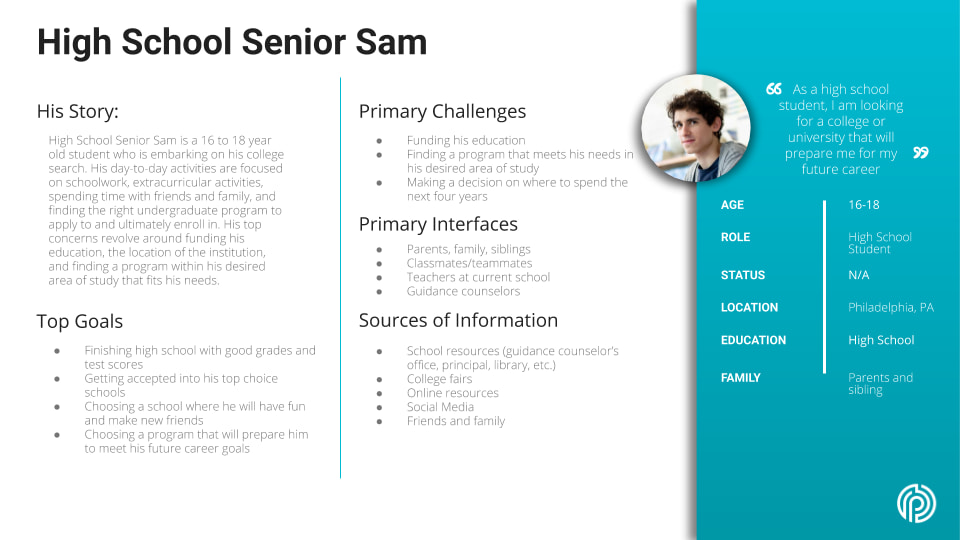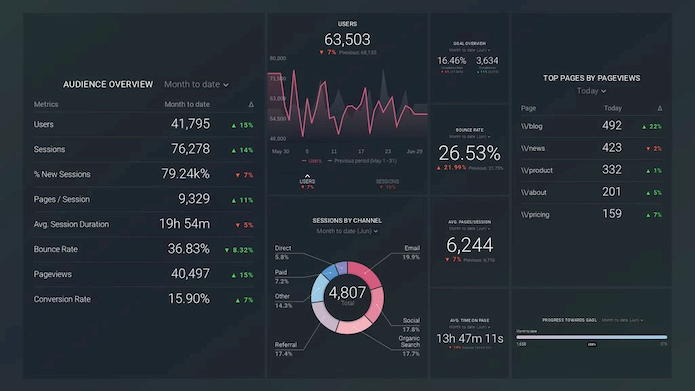Written By:
Tim Stobierski
Content plays a key role in marketing for higher education institutions. In any form, content allows colleges and universities to share their message with their audiences, capture and nurture leads, and drive enrollment. In this blog post, we’ll discuss these key points:
-
What counts as content and why it should be included in your enrollment marketing plan
-
How content marketing converts visitors into enrolled students
-
Guidelines for creating content for your college or university
“Content is King.”
That well-known quote was said by Bill Gates way back in 1996 as he discussed the future of the internet. What he probably didn’t realize is that it would become true not only for content-focused sites like magazines, newspapers, etc.—it would become true for everyone.
Every organization from manufacturing companies to restaurants to institutions of higher education—colleges, universities, private schools—that is trying to use its website to attract visitors and convert them into paying students, guests or customers must create content to be successful.
Why?
Because without content, a company or university simply isn’t likely to be found in search. And let’s be realistic: Search is one of the primary ways that people learn about anything today.
Free Toolkit – Create Student Personas For Your School
The process of leveraging this fact goes by many names. We call it Inbound Marketing. Some call it Content Marketing. For higher education specifically, we like the phrase Inbound Enrollment. Whatever you call it, the philosophy is the same. By creating and distributing high-value content that answers a potential customer’s question, you can create a powerful inbound funnel that:
- Attracts potential customers or students to your website, exposing them to your business
- Builds trust with these potential customers or students
- Converts them into paying students
What counts as content?
In the world of online marketing, the word “content” can mean a lot of things, simply because content can take many forms.
Ultimately, content is anything that you put up on your website with the intention of attracting, informing, entertaining, or influencing visitors to your website. Below is a list of some examples:
- Basic information on your website (such as your homepage, “About Us” page, directions to your destination, or FAQs)
- Blog posts on topics that your potential guests might find interesting
- Social media posts sharing your blog content
- Visual content, like images, graphics, and video
- Calls-to-action
- Ebooks, webinars, checklists, and other free content offers
- Emails
The kind of content you create for your website depends entirely on the kind of business that you operate. For example, in the case of a college or university, in addition to the above, you can (and should) include content that prospective students would expect to find as they consider your school. Brochures detailing student life, program information for various majors and fields of study, example class schedules, faculty directories, etc. are all good types of content to consider.
While it’s highly likely that some of these elements are already part of your enrollment marketing plan, if you haven’t yet formed a cohesive content strategy, now is the time.
How content drives conversion of visitors into students.
Content is critical to inbound marketing for higher education for a couple of reasons. First of all, it attracts visitors to your website. And if it is successful, it will convert those visitors into actual enrolled students.
Having a hard time visualizing the job that content performs? Let’s walk through how each type of content can help work towards converting your website visitors into customers.
Blog posts draw visitors to your website through organic search when your blog post answers a question that they are searching for. Once the visitor is on your blog, other content like additional blog posts, videos, images, etc. help to build trust and establish a relationship with your potential student. While it’s important that this content is targeted to specific keywords important to your university, what is more important is that the content is valuable. By meeting your potential students where they are in their journey and answering their questions, you can enact tremendous influence over their future actions.
Then, basic information on your website (homepage, FAQs, directions, information about your academic programs) help your website visitors evaluate your college or university as a potential place for them to study.
Calls-to-action like buttons and banners encourage your website visitors to take the next step (signup for a newsletter, download a content offer, schedule a tour). Ultimately the goal is to convert the website visitor into a known contact, or lead, which can be nurtured.
Free content offers like ebooks, webinars, downloadable brochures, and class catalogs offer you the opportunity to capture contact information (names, email addresses), which you can then use to send them targeted, automated emails designed to push them further along the process of becoming a student.
And, of course, along the way things like newsletters and social media posts help you directly attract visitors to your website who maybe weren’t actively looking for your specific school in the same way as those you attract through organic search.
Guidelines for Creating Content for Higher Education Marketing
Once you’re ready to begin creating content for your college or university website, it is incredibly important that you make sure you follow the rules below. All of these are geared towards creating a positive experience for your potential students, which will help you build trust with them as a provider of information, making it more likely that you can convert them into students in the future.
1. Know your audience.
The first step in creating content that resonates with your audience is to know who that audience really is. On top of basic demographic information, you should also have a sense of what life stage your ideal student is at, what challenges or opportunities they might be facing, and what motivates them to pursue higher education.
We recommend organizing this information in the form of a student persona— a semi-fictionalized representation of your ideal student. By conducting interviews with current and former students, leveraging your existing data, and involving your team members, you can better understand what makes your audience tick so that you can tailor your content to fit their needs.

Keep in mind that as your content marketing efforts become more robust, you will likely need to develop several different student personas to represent the various populations that your institution serves. For instance, the ideal student for a bachelor’s degree in nursing will probably differ from that of a master’s degree in finance.
2. Always provide value.
Whatever content you produce, it should always be valuable to your potential reader. It must either teach the reader something or entertain them. If it does neither of these things, then it simply isn’t content that you should be spending your resources on.
An easy way to ensure that you are providing value through your content is to conduct keyword research to find the search terms, keywords, and questions that your potential students are asking, and to use those insights to craft your content.
3. Follow through.
If your website has a form with a call-to-action that says something along the lines of “Sign up to receive more information!” then it’s important that the form actually triggers information to be sent to the person who submitted the form. Whether that is in the form of an email, a downloadable brochure, or some other content should be clearly explained alongside the form so that the reader knows what to expect.
And you must follow through. This isn’t the time to jump on the phone and try to sell your school; it is the time to send them the information you promised. If you don’t—if you use the information collected in the form to begin aggressively selling to the person—then you shatter any trust that you’ve built through the rest of your interactions.
4. Don’t overlook the power of blogging.
Blogging has gotten a bad rap over the years because of amateurs and personal bloggers. But the truth is that it’s a powerful tool for any business trying to attract potential customers to their website, and that goes for colleges and universities, too. Blogging allows you to:
- Rank for more of the keywords and topics that are valuable to you and your potential students
- Build trust by answering the questions of your potential students, which may be awkward or inappropriate to answer within the primary structure of your website
- Feed your social media efforts with your own content
In addition to all of this, regularly updating your blog shows Google and other search engines that your website is active. This encourages them to visit your site and index pages, further enabling you to rank for valuable keywords and show up in organic search.
5. Monitor and make improvements.
Your content marketing efforts shouldn’t stop when you hit publish. Now that you’ve spent the resources creating a valuable piece of content, it’s time to monitor performance and make improvements as necessary. Tracking certain key performance indicators (KPIs) like organic rankings, sessions, and conversion rate will give you a sense of which pieces of content are successful and which have fallen short.

If after a reasonable period of time you find that a particular blog post, email sequence, or other piece of content is underperforming, take the time to revisit it with your audience’s needs and SEO best practices in mind.
Powering the Inbound Enrollment Funnel
Once you have set the framework for a successfully optimized website and begun creating content that will attract and convert visitors to your website into students, your inbound engine will begin to take off. But this isn’t a one-time deal: You need to be consistently creating unique content that your potential students find valuable, or else the engine will stall.
Content is the fuel that your inbound engine needs if you are going to be successful. Need some help creating valuable content for your marketing strategy? These free or inexpensive content creation tools can help you take your content to the next level.






